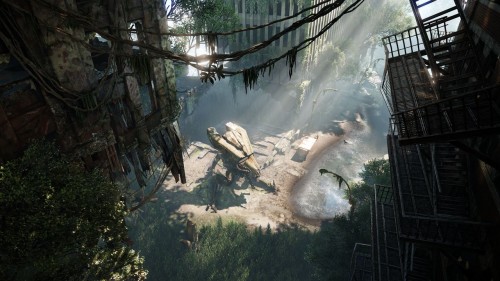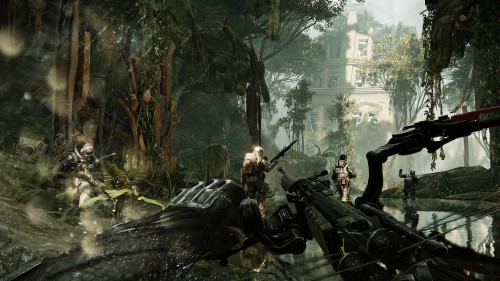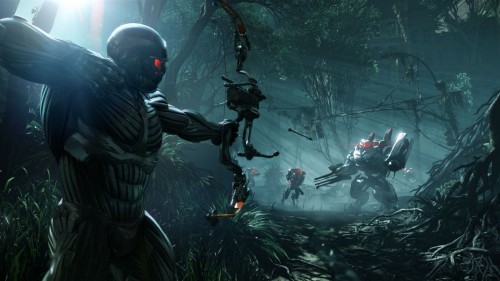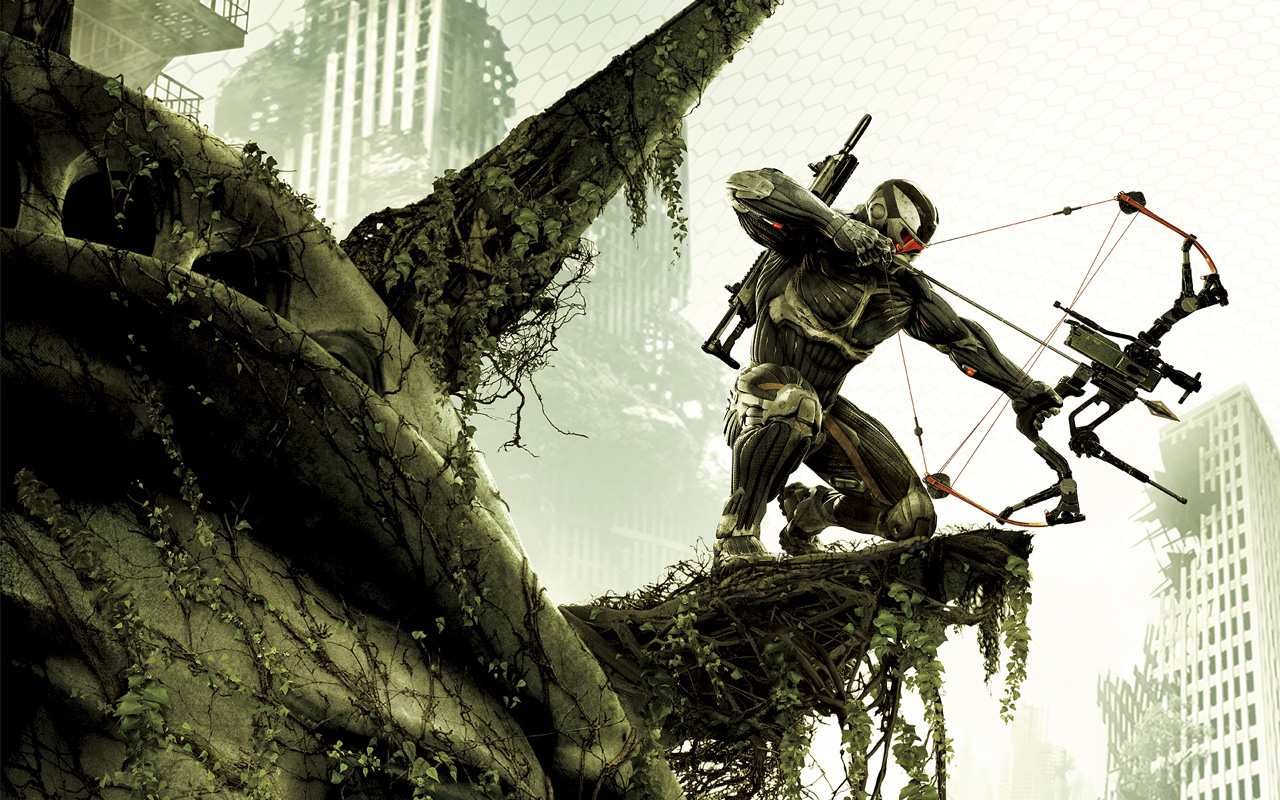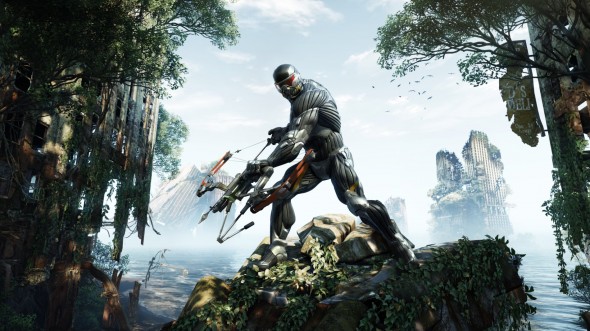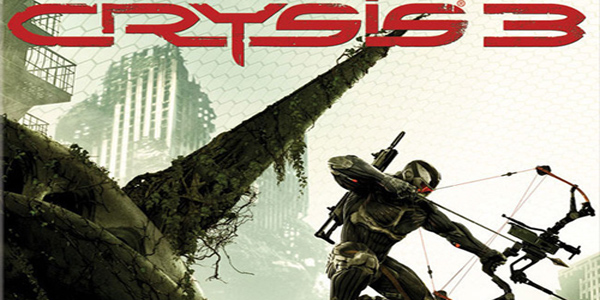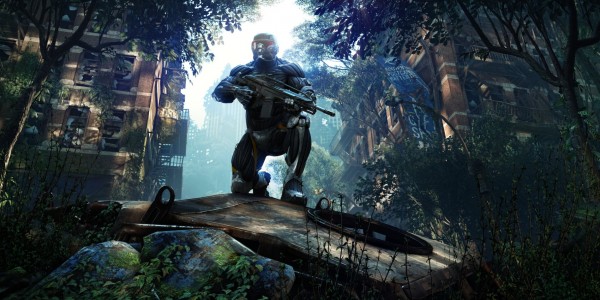
As part of EA’s Asia Pacific showcase this week, I was not only able to get some hands-on time with some pretty wizard titles like Crysis 3 (previews coming soon), but also interview some of the people behind them. Mike Read, Crytek producer, was on hand to talk about their latest nano-engineered blockbuster, as well as the future of the Crysis series.
Rocket Chainsaw: Obviously, Crysis 3 is a huge title for Crytek and EA – do you feel like it’s going to be the climax of the series, without giving away spoilers?
Mike Read: I really feel out of all the games this is definitely the climax to this ‘story bubble’ in the series. We really wanted to end this one off with a bang and pay homage to Crysis 1 and Crysis 2, in mixing a lot of their elements – not only in the environments that we’ve done, but also in the gameplay aspect and what we’ve learned over the past 5+ years of working on Crysis games.
We’ve actually openly talked about this recently – we’re looking at other opportunities to do that, things we can go into inside the Crysis universe. I think that at Crytek, we’ve built out a pretty strong franchise in the Crysis series and a very identifiable one. There are lots of directions we can take here. The game’s not finished yet, it’s not out yet, but we’re already talking about where we can go next.
RC: I remember that the ending to Crysis 2 indicated that the alien (Ceph) problem was not just limited to New York, but was a global one, so you can talk about the reason for returning to the city, even in its altered state?
MR: Yeah, so without giving too much away on that one [laughs], there’s something going on specifically story-wise that led us back to New York again, and the CELL corporation has built this dome over the top of New York city. And in building that dome over the top of New York City, they’ve managed to harness a uhh… [unnamed thing] inside the dome to – 1. Contain the Ceph and 2. Tap into this energy, this unlimited energy resource which they use to their own advantage and monopolizing the world’s energy resources. So that really plays at the heart of one end of the story.
If you go to the wiki and read some of the books and things, there’s a pretty rich history in the Crysis series that dates back to where the Ceph were originally located, and the expedition that happened back in the early 1900s with Hargreave and Rasch and Gould, and what sort of transpired there. And then, leading up to Crysis 1 on the Lingshan Islands, and then of course up to today, and how all of these things tie in together. I think we have a pretty compelling story and I think people are going to enjoy how we finish this one off.
RC: There’s been a lot of focus on the ‘Seven Wonders of Crysis 3’. Which ones have been revealed so far, and which ones can you talk about?
MR: So, the ones we’ve revealed so far are Swamps in Chinatown, which was back in April at the time we first started talking about Crysis at our launch, Canyons at E3, which is in downtown Manhattan, and then recently we gave our hands on and showed a hands-off demo for the Fields wonder, and that is based in the Midtown-West side of Manhattan. There’s a few other ones that will come into play and it’s really been something that is probably one of the most challenging things that we’ve dealt with in the development of Crysis 3. Really just going in and creating these seven distinct environments and not having this really set art style, but really taking elements of New York city and elements of the jungle environments, and what happens when you build a dome over this city and what kind of plant life pops up there without re-using the same assets over and over but redefining each of these areas to accommodate for that, which also lends itself to varied types of gameplay that you’re gonna find throughout the campaign.
RC: I know the original game has become a visual benchmark, even for people today. Is that something you keep in mind about the series when developing the new game, or is it more about producing a new distinct art style?
MR: I don’t think it’s something that’s really at the forefront of what we’re doing. But you know, we’ve really advanced – if you look back at Crysis 1 with the CryEngine 2, I mean we weren’t really in the licensing game by that point, and with the release of Crysis 2 we really saw a big resurgence in people that wanted to get their hands on our technology and our engine and that’s how this advanced a long way as well. Our own in-house projects such as Crysis, which is really one of the forefront games that we’re working on, has really helped us bump our technology up as well and helping us prepare not just for today, but for tomorrow for the next generation as well.
RC: Cool! Well, can we talk a little bit about the multiplayer of Crysis 3? I know the new big mode is Hunter, how’s the reaction been on that so far for you guys, are you still tweaking it?
MR: Yeah, the reaction has been very good. We’re still doing some tweaks on it, and we’re still gonna continue to do tweaks on it up until launch and probably after to figure it out, but I think we’ve got it at a pretty well-balanced phase now. Hunter mode’s very detached from a lot of the other modes that you’re going to find in Crysis 3 multiplayer, in that it’s a kind of a standalone, very fixed kind of thing because of it being so asymmetrical as it is, we had to be careful in how we balance stuff out, in giving the CELL troopers the tools to help them fight these guys, and then also balancing out the fact that these Hunters are running around out there, they’re cloaked, fixing up the lighting so that they’re not completely invisible to them but yeah – it’s a fun, intense game mode.
On the flipside of that are some of the other modes like Crash Site for instance, which is a dynamic capture point mode, which is nanosuit vs. nanosuit. For one, the environments are a lot bigger, but also the stuff we’ve done to the nanosuit is like decoupling the sprint from the energy bar, separating the energy bar for armor and stealth, adding in new systems and things like this, we really wanted to make it fast paced, easier and a different gameplay experience than people are used to in FPS games. It’s amazing how those two modes alone can really change the complexity and dynamic of the game itself.
RC: Speaking of the nanosuit, there’s this deeper upgrade system in the single player mode, which I noticed when I was playing the hands-on. Can you talk about this new system and what people can expect with it?
MR: Yeah, that’s the nanosuit upgrade system. That’s coming into its final tweaking stage right now. We’re almost done with that, but what you see there is pretty close to a final state, although I think some things on the UI are actually going to change on that front.
But, in Crysis 2 we had a system where you basically killed aliens, you picked up nanocatalyst, you took that nanocatalyst and then applied it to upgrading stealth technologies or armor technologies. It was a very shallow system, which we were never really happy with. So coming back to Crysis 3 we wanted to create something that was more of a combination system, which you probably saw in there. So now, gone are the days of picking up nanocatalyst, and what you do now is around the campaign there are various upgrade kits, and those nanosuit upgrade kits are placed around the campaign – some are hidden, some are very obvious, and players will have to collect those and unlock these things.
So, what we wanted players to be able to do is unlock these and customize different combinations that they can quick switch and save and flip between, and kind of customize the suit technology and the gameplay experience that they’ll encounter. Things like reduced recoil on weapons to longer cloaking times, to all kinds of things that will benefit the player and let players customize their gameplay style as well.
RC: OK, well just to wrap up, the Seven Wonders campaign that has started for Crysis 3 is part of a collaboration with film director Albert Hughes – how has that come about and been working?
MR: Well, this all really started before I came on board, but it was originally between marketing at EA and Crytek, and we wanted to do a series with someone from Hollywood, so we brought Albert in and I think it was like the second or third week I was there, I was sitting down with him in a room with my boss and we’d bring the level designers one-by-one and kind of explaining to him the environments, and the story and showing some of the cinematics – it was a very early stage at this point. And Albert really understood what we were doing and where we were at, and we felt that the stories that we were tying into this fit in really well with where we were going as a great supplement to Crysis 3 and also having his take on it.
He went back and did some storyboards, and we bounced those back and forth, you know we came with him and we started generating various scenes in-game, it was all entirely done in CryEngine3, there’s no external rendering going on in there at all. We were passing those clips onto his editors, who were kind of cutting it together in accordance with us and EA as well to end up with a final product, and I think some of the later episodes are pretty epic as well. Now that we’ve got the first one out there, it’s pretty cool to see what the response has been.
RC: Great, well thanks for the interview, Mike!
[youtube id=”bneAJKSjeKI” width=”600″ height=”350″]
Crysis 3 is out 21 February, 2013.

